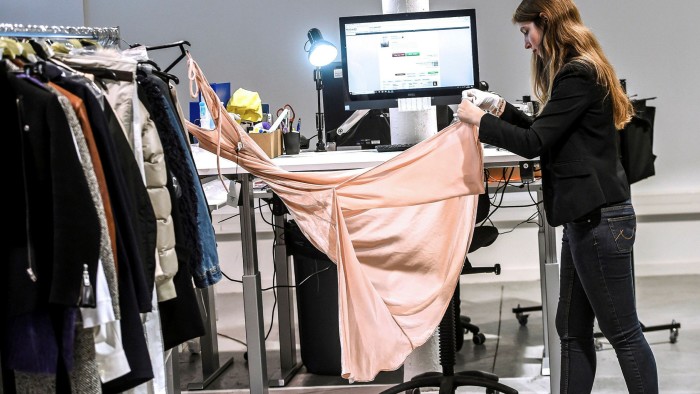Gucci owner Kering invests in resale platform Vestiaire Collective

Roula Khalaf, Editor of the FT, selects her favourite stories in this weekly newsletter.
Luxury group Kering has invested in Vestiaire Collective, Europe’s biggest platform for high-end second-hand clothes and handbags, in a bet that the resale market will be a way to win over younger, more environmentally-conscious consumers.
The company that owns Gucci and Balenciaga acquired a 5 per cent stake in the Paris-based start-up, which was valued at “over $1bn” in a €178m ($214m) fundraising round announced on Monday. US investment firm Tiger Global Management also invested for the first time, while previous backers such as Bpifrance and Eurazeo Group put more money in.
“We recognise that this is a fundamental shift that’s happening in the way clients are relating and engaging with luxury fashion, so we don’t want to close our eyes and pretend it’s not happening,” said Kering’s digital chief Grégory Boutté in an interview.
“On the contrary, we want to embrace it because we think it’s a big opportunity for us to provide an additional service to our clients.”
The vote of confidence from Kering, which will have a seat on the board of Vestiaire Collective, comes as the online resale market has boomed during the Covid-19 pandemic, with housebound shoppers looking for deals on second-hand clothes.
It is also a sign that the luxury industry’s traditional wariness about second-hand sales, which weaken their control over distribution and pricing of their brands, looks to be fading. Switzerland’s Richemont bought a watch resale website Watchfinder in 2018, while US department store Neiman Marcus in 2019 took a minority stake in Fashionphile, a shopping site for second-hand luxury handbags and accessories.
Boston Consulting Group estimates that the global resale market is worth as much as $40bn, and forecasts it will expand at a compound annual growth rate of between 15 per cent and 20 per cent over the next five years. But it remains a tiny part, just 2 per cent, of the broader fashion and luxury market.
Those companies that have moved the traditional consignment shop on to the web have grown rapidly, but all have struggled for profitability. In the US, several have gone public including Poshmark in January and The RealReal in June 2019.
Vestiaire Collective declined to provide revenue figures but said its transaction volume had grown more than 100 per cent year-on-year, and that it now had some 11m members. People can sell on the platform from 50 countries, and buy from 70.
Chief executive Maximilian Bittner said the fundraising would be used to expand in new markets, as well as hire more technology experts and programmers. It will also go to develop a new way of working directly with brands to help them put in place “resale as a service” in their stores and with their customers.
Kering’s Alexander McQueen recently became the first to start working with Vestiaire Collective on the platform’s new “Brand Approved” programme, under which sales representatives proactively contact their clients to see if they have items they want to sell. If they do, McQueen authenticates them and then lists them for sale on a dedicated section of Vestiaire’s site. If the items sell, then their original owner gets credit to be used at McQueen boutiques.
Bittner said the programme was “a very pioneering new way” to develop the so-called circular economy for luxury goods. “We want to encourage people not to have unused clothing sitting in their closets and rather get them back into circulation.”
Separately, Kering’s biggest brand Gucci announced in October that it would work with The RealReal in the US to create a dedicated online shop on the platform stocked with products consigned by people and also directly from the brand.
Additional reporting by Kaye Wiggins
Comments